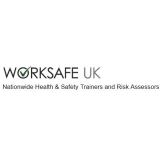This informal CPD article “What are the advantages to having trained DSE Assessors?” was provided by Worksafe UK, one of the largest Health & Safety Training companies in the United Kingdom.
DSE or workstation use is found in almost every workplace and its use has been linked to a variety of health issues, such as musculoskeletal discomfort, mental stress, and visual strain. If not addressed, these health issues can lead to staff absence and potential long-term health issues which can be difficult to address.
HSE statistics for 2021/2022 show 477,000 workers suffering from a work-related musculoskeletal disorder. Many of these will be attributed to incorrect use of DSE. So, it is no surprise that making provision for your DSE users* is a legal requirement as set out in 'Work with display screen equipment: Health and Safety (Display Screen Equipment) Regulations 1992.'
*Under the Regulations, a DSE user is defined as someone who uses DSE daily for continuous periods of an hour or more.
The regulations place a duty on employers to perform a suitable and sufficient analysis of the workstation of any DSE user in order to assess the health and safety risks to which they may be exposed. Any risks which are identified should be eliminated, reduced or controlled.
Are DSE Assessors a legal requirement?
No. There is nothing in the DSE regulations that specifically states that employers must have in-house DSE assessors. However, carrying out DSE assessments for DSE users is a legal requirement, and these assessments must be carried out by someone who is competent and suitably trained.
What does a DSE Assessor need to do?
The regulations set out the requirements for employers to provide workstation assessments and to provide instruction on safe working practice with DSE. For instance, employers should make arrangements to:
- Carry out DSE assessments for all staff (including new personnel) to include:
- good posture
- adjusting chairs and other furniture
- arranging desk space
- adjusting screens and lighting to avoid reflections and glare
- breaks and changes of activity
- how to report problems
- Take steps to reduce risk.
- Ensure anyone reporting the start of a work-related ache or pain receives prompt intervention.
- Carry out staff inductions on best practice regarding DSE use.
- Assess workstations whenever the workplace changes, for instance moving to a new desk, furniture change, office relocation.
- Present new employees with staff induction about the proper utilization of DSE.














